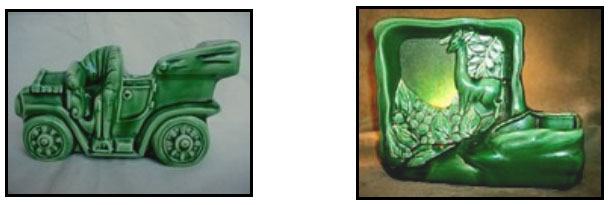By Ima Pot
The end of World War II brought many changes to the United States. The need for continual sacrifice was over. Families that had accumulated some saving during the war years were now free and able to purchase the things they needed, as well as, some luxuries. One of the things most families had to have was a television set. In 1948, this universal desire led to an explosion of sets in the marketplace. In August of that year there were two million sets in the US. By the end of 1950, there were 9.5 million sets in use, and by the middle of 1951, the number had grown to 13 million. But this was only the beginning – the number of sets steadedly grew with each passing year.
The early TV’s were heavy, boxy contraptions, and they were filled with vacuum tubes of all shapes and sizes, only to provide a viewing screen of six to eight inches wide. The pictures had a gray and white tone, and were fuzzy and dim. They were best viewed from a position not too far away from the set and in a darken room.
The new medium brought a new type entertainment right into the home, but it came with a negative criticism. TV’s gave off a weird pale light, that many people associated with some type of radiation, As you may recall, radiation was a big topic in the 1950’s. However, TV sets were not found to give off any measurable level of radiation, and there was no evidence that radiation from TV sets had resulted in human injury. Despite the evidence, and the assurance of TV manufacturers that everything was safe, many people believe otherwise. There was another concern too. The idea abounded that staring at that weird, fuzzy light for hours was probably bad for your eyesight. The concern for retaining good eyesight is what led to the invention of the TV lamp.
The lamps presented a decorative view from the front and had a small light bulb in the rear. They were positioned on top of the TV, and they produced an indirect light that illuminated the room by reflecting the light off the wall behind the TV. Experts in the field sanctioned this indirect lighting. While the lamps were decorative, they were considered by some to be a medical necessity. With a TV lamp in place, the fear of the public was releaved and everything was then okay. In fact, they satisified the public concern so well the production of the lamps had to keep pace with the booming TV production.
The 1950’s and 60’s were the hay day of the TV lamps. In the years following, as the TV screens got larger and brighter, people could sit further back from the screen. The muted room light given off by the TV lamp was no longer needed, and the use and production of the lamps entered into a quick decline.
During the time of their demand, the Nelson McCoy Pottery contributed their share of lamps. Shown here are TV lamps made by the company. The first three lamps, the Panther, Mermaid, and the Fireplace do not appear in the company catalogs. However, they have been accepted as McCoy’s since the early 1970’s, apparently through pottery employee reports.

The Log, Sunflower, Auto, and Bird Dog, are all shown in the company catalogs as planters, which indicates that the lamps are also McCoy products.

Some people have attributed the following two pieces to the Nelson McCoy Pottery; however, there is no verifying information.
The auto is marked Buckingham Ceramics, and although McCoy did do business with them, notably the Wishing Well table lamp, neither the auto, nor the deer lamp, have been shown, or reliably reported, to be a McCoy product.


